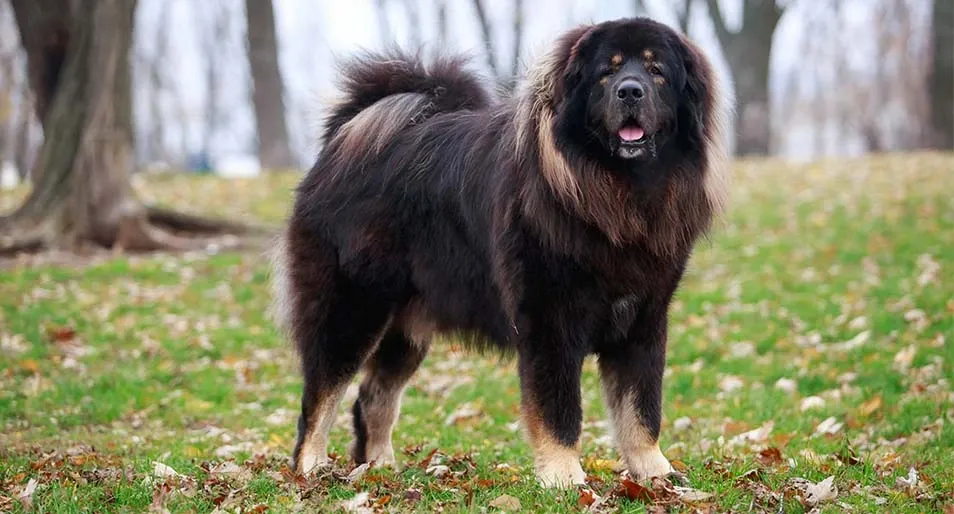Mastiffs enjoy spending time outdoors and generally are laid-back dogs. However, they aren't high-energy dogs and require lots of exercise. Mastiffs are able to enjoy a wide range of outdoor activities according to their preference and personality. Here are a few examples: Walking- Mastiffs can enjoy leisurely, long walks around the neighborhood or nearby parks. This is a fantastic way for them to get exercise but not cause too much damage.
Hiking- Some Mastiffs enjoy hiking with their owner along trails or in nature preserves. This allows them to experience new places and provide light to moderate exercise.
Swimmingis a great way to exercise your muscles. Mastiffs love swimming as it is low-impact and easy on the joints. Your Mastiff might enjoy a swim in a nearby pool or in a nearby river.
Playing- While Mastiffs tend to be sedentary but they love to play outside with their owners. This could include games like fetch, tug-ofwar, or other interactive games.
Lounging - Mastiffs are a relaxed breed that likes to relax. It's perfectly acceptable for your Mastiff to just take in the sun and the fresh air.
You must supervise your Mastiff outdoors to ensure their safety. It is possible to speak with an experienced dog trainer if you have questions about your Mastiff's preferences or activity level. Check out the most popular what to feed mastiffs blog for site recommendations.
[img]https://azure.wgp-cdn.co.uk/app-yourdog/posts/mastiff_0.jpg?\u0026width\u003d480\u0026height\u003d480\u0026bgcolor\u003dffffff\u0026mode\u003dcrop\u0026format\u003dwebp\u0026webp.quality\u003d40\u0026scale\u003dboth[/img]
What Are The Advantages And Pros And?
Mastiff adoption can be a rewarding experience. But like any other pet adoption, there are pros and cons.
You are saving a life by adopting the Mastiff.
Mastiffs have a love of companionship and can be trusted to be loyal and loving friends.
Security - Mastiffs offer security and protection for their owners.
Lower adoption costs- Adopting an animal like a Mastiff from an animal shelter or rescue organisation is usually less costly than buying one from a breeder.
The pros and cons of adopting MastiffPros of adopting Mastiff
Problems with behavior Issues with behavior Mastiffs may have been surrendered due to an aggressive, anxious, or fearful behavior. These behaviors can be difficult to address.
Medical expenses: Mastiffs could be susceptible to heart issues, joint problems, or the bloat. This could result in large medical expenses.
Training- Mastiffs require the right training and socialization to become well-behaved, and it can be time-consuming and challenging for inexperienced owners.
Size- Mastiffs need big dogs, which means they're not appropriate for smaller homes.
Before you decide to adopt a Mastiff or other animal, you have to consider all aspects, both pros and cons. Doing some research, speaking with a vet or behaviorist, and visiting with potential adoptees can help you make an informed choice. You should also remember that aggression isn't a permanent trait and can be corrected with proper training and behavior modification. Dogs can learn to be calm and well-mannered. They can be happy pet owners by using patience, consistency, as well as the right approach. View the recommended mastiff cross labrador for website examples.
[img]https://cdn.trendhunterstatic.com/thumbs/dogs-of-the-world.jpeg?auto\u003dwebp[/img]
What Are Tibetan Mastiffs' Most Favourite Foods, And How Many Do They Eat Each Day?
Tibetan Mastiffs need a high-quality, balanced diet that is high in protein and fat. Their weight, age, and level of activity determine how frequently and how much they should be fed. As puppies, they need to be fed more frequently than dogs of adulthood. A mature Tibetan Mastiff is expected to eat two meals per day. This is in addition to the recommended daily amount of food intake for Tibetan Mastiffs. This is about 2-4 cups of high-quality dry food. However, the actual amount could differ based on the individual's needs It is therefore important to speak with a veterinarian to determine the appropriate food schedule and quantity for your particular dog.
It's crucial not to feed too much Tibetan Mastiffs as they are prone to obesity and can cause other health issues. It is essential to ensure that they are able to drink fresh water throughout the day.
How Often Should Your Tibetan Mastiff Be Groomed?
Tibetan Mastiffs have a thick and thick coat that needs regular grooming to avoid matting and tangling. For any loose hair to be removed, Tibetan Mastiffs must be brushed at least once per week.
You may also want to bathe your Tibetan Mastiff every now and then to keep their coat clean and healthy. But be cautious not to over-bathe them since it may strip their coat of their natural oils and cause dry skin.
It is not enough to just clean your Tibetan Mastiff's teeth and bathe them frequently.
Grooming your Tibetan Mastiff should be regular part of their day to ensure they are happy and healthy. View the recommended Tibetan mastiff breed report for website tips.

What Is It That Tosa Inu Japanese Mastiffs Eat?
Tosa Inu or Japanese Mastiff is a massive and powerful breed of dog. The food requirements of Tosa Inu can vary depending on their age, weight and activity level, as well as their health and general health. Tosa Inu must have access to water that is clean all the time. A premium dry kibble that has an average protein content of 20-25% is an ideal option for Tosa Inu. You can also feed them cooked or raw meat, like chicken, beef or even fish in addition to their diet. However, it is important to ensure that the meat is cooked properly and that bones are removed prior to eating, since raw meat can carry bacteria and bones can pose the risk of choking.
Their level of activity and age can impact the quantity and frequency with which they eat. Adult Tosa Inu require to be fed twice a day, while puppies require three to four meals a day. For an adult Tosa the recommended daily intake of food is 2 to 4 cups (two meals) of high-quality dry dog food. Tosa Inu may become overweight when they are fed too much. This can lead them to have joint pain, heart disease and other health problems.
Tosa Inu owners should speak with their vets to determine the best quantity and frequency to be fed. Take a look at the recommended mastiffmaster.com for more info.

What Do Bullmastiffs Love To Eat How Much And How Often Do They Eat Each Day?
As with all dogs, Bullmastiffs require particular diet that is specifically customized to meet their specific needs. These requirements can be influenced by many aspects, including weight, activity level and overall health. Bullmastiffs need between 2 and 3 cups of high-quality dry dog food per day. This is just a guideline. Bullmastiffs can also need to eat two meals a each day. Choose a dog food with high-quality sources of protein, such as beef, chicken, or fish, as well as nutritious fats and complex carbohydrates. Beware of dog food that has fillers artificial preservers, artificial preservatives, or products from other sources.
Bullmastiffs can be overweight. So, it's essential that you keep track of their food intake. Bullmastiffs can also enjoy occasional treats from you however, it's crucial to remember this when calculating their daily calories.
It is a good idea to consult your vet about the specific needs and the feeding schedule of your Bullmastiff. They'll be able to give you advice on the ideal food type and amount to feed your Bullmastiff, based on their individual needs. Follow the recommended bullmastiff breed for website examples. Read more Awesome Suggestions When Picking The Best Mastiff Msftip 7019481



